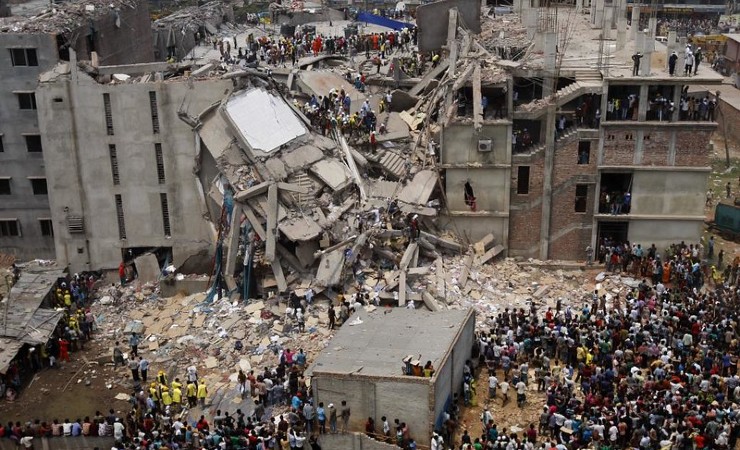After Rana Plaza: Scholars Study Exploitive Labor Regimes in Bangladesh
Worker exploitation in garment supply chain factories is not just about sweatshops, note the authors of “After Rana Plaza: Governing Exploitative Workplace Labour Regimes in Bangladeshi Garment Export Factories” which appeared in the Journal of Industrial Relations. Those authors, Stephen J. Frenkel of the University of New South Wales, Shahidur Rahman of BRAC University in Bangladesh, and Kazi Mahmudur Rahman of the Independent University, Bangladesh, write this as we near the 10-year anniversary of the Rana Plaza disaster in Bangladesh which killed at least 1,132 workers when a garment factory collapsed in Dhaka in 2013.

Conducting the research was challenging. There was no statistical register of factories from which one could draw a sample. Furthermore, factories were difficult to access as managers were unfamiliar with research and in Bangladesh it isn’t easy to communicate (internet is not always available) and travelling along hazardous roads is discouraging. In addition, managers appeared defensive, resisting our requests to undertake multiple interviews with managers and denying us the opportunity to interview workers. Consequently, it was not possible to fulfill some of our key objectives e.g., to study in-depth a selection of garment export factories and survey relatively large samples of workers employed at these factories. Such limitations are often insufficiently acknowledged by journal reviewers.

An unexpected research finding was our discovery of distinct patterns of worker outcomes (pay, employment and working conditions) in the factories. We have labelled these ‘sweatshop’ and ‘hardship’ workplace labour regimes respectively. There are two more types of regime that are less common and which we only note in passing in this paper. The ‘fair work’ regime would not be regarded as exploitative, given limited resources in a country like Bangladesh. These factories tend to be large, technologically advanced, offering relatively good pay and conditions. At the other extreme are the most exploitative type of workplaces: ‘Modern Slavery’ type regimes. These mostly very small, informal production units are much less common in the export sector but probably predominate in the sector producing for local consumers. This is an important site for future research. It will require new methodological approaches that enable deep access to people employed on a casual basis and who barely making a living above subsistence level.
A noteworthy contribution of our paper is the development of a theory that explains variations in workplace labour regimes in global supply chains. We hope our study will encourage more research into workplace relations in supplier factories — exposing ineffective regulation and provoking improvements in labour regulation policy. Better theory is needed to frame and explain emerging empirical studies of variation in workplace labour regimes. We anticipate our framework being extended in three directions that were difficult to analyse in our study. First, incorporating, where relevant, racial, religious and ethnic identity appropriation by managers and workers. Second, theorizing the adoption and deployment of new technology by management and workers; and third, exploring variations in labour markets as a key influence on workplace relations and outcomes.
































































































